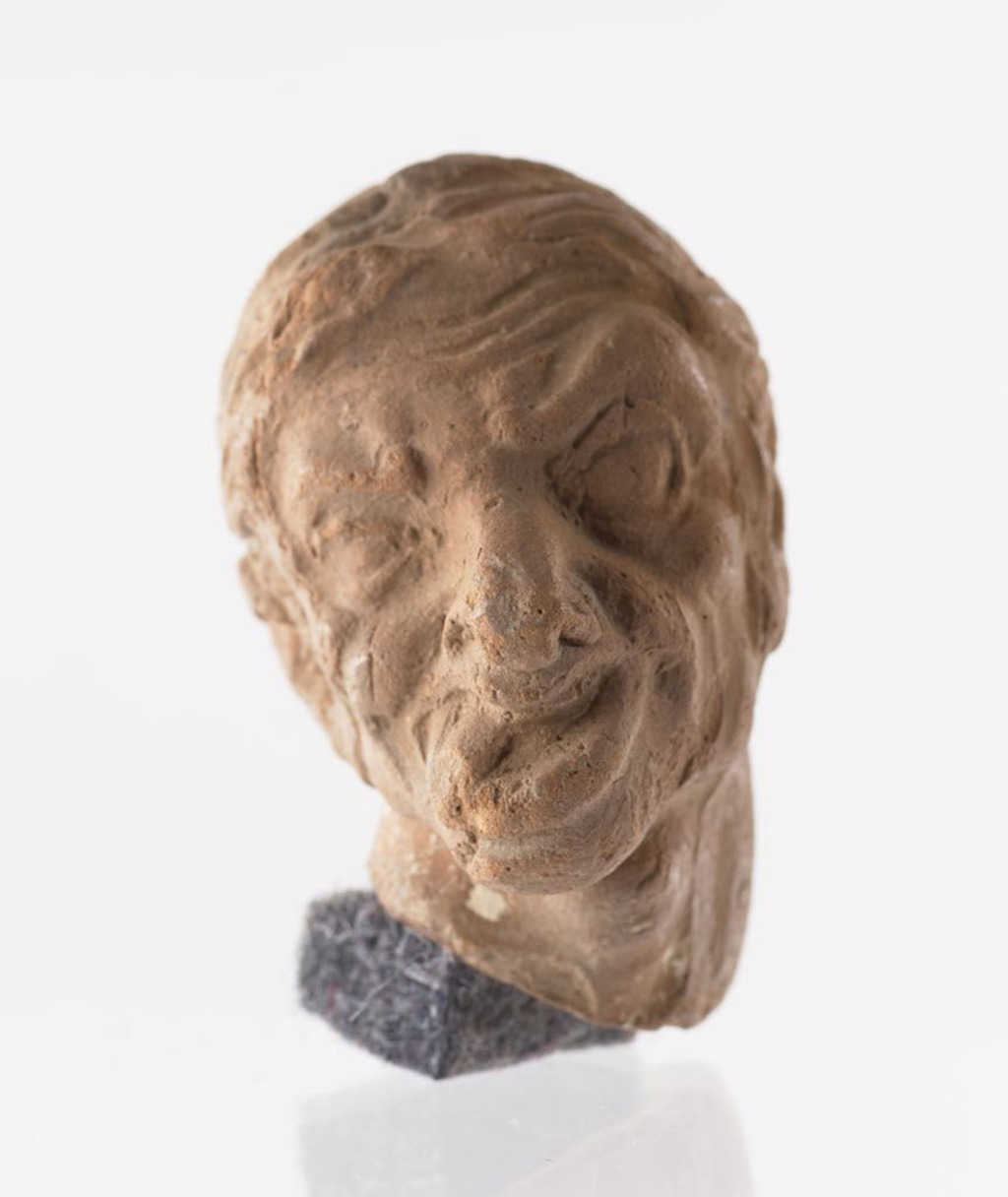This small head represents a figure who most likely suffers from some form of facial paralysis, indicated by the droop of the face, protruding tongue, and dramatic tilt to the head. The naturalistic depiction also shows signs of age. The figure wears a cloth cap over his short hair.
In the past, terracotta figures representing health conditions were classified as “grotesques.” “Grotesques,” a problematic aesthetic term, refers to a broad and diverse group of figures and anthropomorphic vessels with embellished or distorted features, as well as to a group of naturalistic portrayals of diseases. The identity of the figures is often unclear, especially in the case of heads broken from the body of the figure, and the exact function of these figures is unknown. It is possible that they were meant to have an apotropaic, or talisman-like, function to protect from disease.
This figure is one of the terracotta objects in the Menil Collection that was once part of the collection of Dr. Daniel Marie Fouquet (1850–1914) and appeared in publications as early as 1908. Dr. Fouquet, himself a medical doctor, was particularly interested in ancient representations of individuals with different pathological conditions. Another object from Dr. Fouquet’s collection and now in the Menil, (1972-62.03 DJ) represents a different form of paralysis along with details consistent with achondroplasia (dwarfism).

